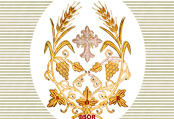
 |
|
||
|
Beth Gazo D-ne`motho The Treasury of Chants |
|
|
Schools of MusicThroughout history, local variations to the melodies of the Beth Gazo emerged forming various schools of music. The relationship between all these schools still awaits studies by musicologists. It must also be pointed out that, there are variations, albeit minor, in each local school from one chanter to another. Therefore, any serious study must make use of many recordings by different chanters from different schools. Apart from the school of Takrit (now used in the churches of Mosul, Iraq), the variation between the different schools is not very great. A deacon experienced with the musical school of Mardin would be able to follow other schools. The large gap between the school of Takrit and the other schools lies in the fact that Takrit for a very long time was under the Persian Empire in the East, while the rest of the Syriac Orthodox Church was under the Byzantine Empire in the West. The East and West traditions continued to grow along separate lines. Of the Western schools of music, the School of Mardin is by far the most popular and is considered the norm. This is due to the fact that for hundreds of years, the Patriarchate was located at Deir al-Za`faran near Mardin. The recordings on this site are according to this school. The second largest school is that of Tur Abdin. Presently, it is used in Tur Abdin and in the Diaspora with communities originating from that region. The largest concentrations of this Diaspora are in Germany, Sweden, Holland and other European countries. Another tradition which is preserved to some extent is that of the School of Edessa. It is mainly used today among the Edessan community, presently living in Aleppo. Diarbaker (in Turkey) and Sadad (a village in Syria) have their own traditions too. The former is not preserved well enough, and it is hoped that recordings will be made to preserve this tradition. The musical School of Kharput (in Turkey) is another endangered tradition. In the mid 1980s, Anton Kiraz (whose family originated in Kharput) asked his friend Chor Episcopos Abd el-Nur Samuel to record the Beth Gazo according to the tradition of Kharput. Upon completing the recording in 1987 in NJ, the old Chor Episcopos kept the five 90-minute cassette tapes - wrapped in a Kentucky Fried Chicken paper bag - in a safe with a note, "If I die, please deliver to George, son of Anton Kiraz." When later G. Kiraz's aunt, Mariam Hazou, went to pick up the tapes, the Chor Episcopos opened the safe and showed her the note. India, of course, has developed its own tradition, the Malankara school of music, which may have derived from the school of Mardin. The blend of Near Eastern and Keralite music brings nothing but pleasure to the soul. This can be seen from the a clip taken from Mshiho Natareh L`idtokh (1st mode) where the chanter sings the Syriac hymn while tapping the palm of his hand against his legs, a Keralite secular musical custom. The following extracts give the listener a taste of the various traditions. Here is Quqoyo "the Potter" (1st mode) according to the schools of Mardin (by Patriarch Jacob III), Kharput (by Cor Episcopos Samuel), and Malankara. |
| Copyright © Syriac Orthodox Resources. All Rights Reserved. |
| Last Update:May 31, 1997 |